The electric guitar is electric, obviously, and that’s what makes it special. The acoustic guitar may be natural and beautiful, but nothing compares to the crushing majesty of an amplified electric—dimed, maxed, and inducing deafness.
You know that.
But bluster aside, the electric guitar is also infinitely malleable. Since the ’60s, when inexpensive effects hit the streets and made modifying your guitar signal possible, guitarists have been shaping, crafting, and modulating their tones. Those first pedals, like fuzz boxes and wahs, for example, were simple but effective tools that left guitar players pining for more. And more was to come, especially as technology improved and music went digital. But research, development, and production are expensive, so, for the most part, the big advances were made by well-funded companies and industry leaders. Like you’d expect.
Until now.
Parallel with the dawn of the new century is the democratization of pedal innovation. Basement tinkerers, experimenters, sonic misfits, and the curious set up small, one-man, mom-and-pop businesses. They developed new twists on old ideas, perfected old circuits, updated outdated technology, reinvented forgotten concepts, crafted newness from nothing, and radically altered the guitar-playing landscape.
In this roundup, we profile eight stompbox scientists. Their designs are different, sometimes unusual, and redefine what guitar pedals can do. Some are boutique treasures that emphasize appearances and look more like art pieces than guitar gadgets. Others are nondescript, but hide little monsters under the hood. All will transform your tone, challenge your assumptions, and afford you the tools to make better music.
Most of our builders are based in the U.S., although we went international and spoke with builders in Finland and Canada as well. We discussed their building philosophies, standout designs, popular pedals, the challenges and benefits of running a small shop, and the artists and new music their products make possible.
Are you ready? Make sure to take notes. Videos, manuals, demos, and reviews are already online for most of the pedals discussed. You might find your missing link—or multiple links you didn’t know you were missing.
The new Tonal Recall delay features a pair of reissued MN3005 bucket-brigade analog ICs, the same type used in
the classic Electro-Harmonix Memory Man.
Chase Bliss Audio
Based just north of Minneapolis in Anoka, Minnesota, Chase Bliss Audio is the brainchild of pedal builder Joel Korte. His pedals are notable for their kitchen-sink approach—analog guts, digital brains, multiple knobs and toggles, and a bevy of DIP switches—with no parameter left untweakable. “I’m really trying to exist in a space where others do not,” Korte says. “A lot of guitar pedals want to control the user experience—you can only turn the knobs so far so it sounds a certain way. But mine are the exact opposite of that. I don’t want to control the user experience at all. I want to give users a canvas to do whatever they want.”Korte’s first pedal was the innovative Warped Vinyl. “I had this idea to digitally create an LFO [low frequency oscillator] that provides a ton of control,” he says. “It’s called ModuShape and it lets you make any kind of shape you want. I wanted to hear that kind of LFO control applied to pitch vibrato.”
Chase Bliss chief Joel Korte at work.
It’s a concept he’s transferred to his other pedals as well. “You can control every parameter with an expression pedal individually or simultaneously, and also ramp any parameter individually or simultaneously. It’s like you have a little robot that can turn your knobs in a rhythmic way without you having to bend over. Some of that stuff sounds really interesting and musical, and some of it sounds insane. It’s up to the users to do what they want with it.”
Zack Warpinski sketches plans for world domination. Or perhaps a new circuit.
Korte’s newest offering, Tonal Recall, is a delay based on that same analog/digital concept, and it’s shaping up to be his biggest seller. “Ever since I started the company,” he says, “I’d hear, ‘Hey bro, you gotta make a delay.’” But Korte held off because the chip he wanted to use—the MN3005 bucket-brigade delay analog IC used in the old Electro-Harmonix Memory Man and Boss DM-2—had been discontinued. “It was hard for me to get excited about delay, because that particular chip wasn’t around. But last year the chip was reissued, so I decided to do it.”
Warped Vinyl—Korte's first pedal—uses a digital LFO to control pitch vibrato.
Korte’s pedals are making the rounds, but don’t expect him to name-drop. “I’d rather just not have an artist roster,” he says. “Obviously, I love it. I’m a music fan and if someone notable is using the pedals, I think that’s amazing. But at the same time, there are a lot of really talented people using our products who are undiscovered.”
Chase Bliss be chillin’: Holly Hansen, Zack Warpinski, and Joel Korte. “I’m really trying to exist in a space where others do not,” says Korte of his sonic vision.
The company’s backstory is inspiring, too. “It’s named in honor of my brother, who was killed by a drunk driver in 2007. I was going down the path of normal life—I was just going to exist and not do anything that was interesting for me. He was out in L.A. trying to be an actor, and his death really shook me. I realized I needed to pursue something I was passionate about. It really felt right to name the company after him and his approach to life.”
Click next or choose the pedal builder you want to learn about first:
Hungry Robot
Mantic Conceptual
Darkglass Electronics
Fuzzrocious
3Leaf Audio
Cusack Music
Union Tube & Transistor
The Wash is aimed at guitarists who typically use multiple delays and reverbs to create lush sounds. “I often see ambient players using two delays and two reverbs at a time to create their ambient wash tone, and I wanted to have
that all in one pedal,” says designer Eric Junge.
Hungry Robot
Hungry Robot Pedals offers deep tones with a streamlined interface. “I try to make the user experience as simple as possible,” says owner Eric Junge. “When you’re onstage, you don’t want a whole bunch of presets and hidden menus. Different parameters are great for the studio, but when it comes to a live setting, you want to focus on your playing and interact with the crowd.”Junge’s first pedals were overdrives—which he still builds—though lately he’s focused on ambient tones, as evidenced by his biggest seller, the Wash. “I wanted to simplify the ’board for someone who plays ambient stuff,” he says. “I often see ambient players using two delays and two reverbs at a time to create their ambient wash tone, and I wanted to have that all in one pedal. A lot of people mistake the Wash for just a delay and reverb, which it is at its core, but what makes it unique is the way those two interact with each other. There are different types of feedback loops built into the pedal, where the reverb goes back into the delay and that will go through the reverb again and then into a different part of the delay. You can’t do that with patch cables. I also wanted a tap-tempo delay that was able to engage the super lush ambient wash tone underneath the signal.”
Junge builds every Hungry Robot pedal in his basement.
Junge’s pedals don’t use a battery, which seems to be a trend in the industry. “I’ve probably sold close to 1,000 pedals and I’ve only had two people ask about batteries,” he says. “I think the general consensus is most people aren’t using batteries any more. A lot of my designs are very tight internally—I couldn’t even fit a battery into a couple of them. So my take is, ‘Am I going to make this pedal bigger for the 0.1 percent of the public that’s going to use a battery?’”
The Starlite reverb pedal offers tap tempo and modulation.
One tight design is the HG+LG (High Gain plus Low Gain), which consists of two overdrive pedals crammed into a single enclosure. The outside controls are simple, but inside 12 DIP switches let you make subtle changes depending on your guitar and amp combination. “I saw with a lot of different guitarists that the overdrive section of their board was constantly changing,” he says. “They would buy a pedal, play through it for one or two days, and put it up on Reverb.com. I wanted people to be able to customize their drive by tweaking the different diodes, tone signatures, and gains. My hope is that whatever types of guitars and amps they’re using, they’ll find a way to have everything mesh well.”
Junge’s MO is to produce deep tones with a streamlined interface. “When you’re onstage, you don’t want a whole bunch of presets and hidden menus,” he says.
Hungry Robot is a family affair and the pedals are built in-house. “It’s all in my basement right now,” Junge says. “I do all through-hole components—I don’t send it to a board house and have surface mount stuff slapped on there. I wire it all together. I do all the powder coating, all the drilling, all the PCB assembly, and final assembly. Even the artwork, my wife does that.”
Click next or choose the pedal builder you want to learn about first:
Chase Bliss Audio
Mantic Conceptual
Darkglass Electronics
Fuzzrocious
3Leaf Audio
Cusack Music
Union Tube & Transistor
Mantic’s Caleb Henning (left) and Luis Etscheid. “Just hold still, Luis, this won’t hurt at all.”
Mantic Conceptual
Mantic Conceptual pedals are weird, and that’s a good thing. “I got into circuit bending, modding, building synth modules, and what-have-you,” says Luis Etscheid, Mantic’s co-owner and winner of the 2012 Moog Circuit Bending Championship. “It was a long-term organic evolution of things that brought us to a product.” Etscheid founded the Colorado company with his business partner Caleb Henning in 2013.—Luis Etscheid, Mantic Conceptual
The duo’s first pedal—and their closest to a clone—is the Density Hulk sub-harmonizer and low-frequency booster. “It’s based on the 1995 DOD Meatbox,” Etscheid says. “That’s what we started our company on. Other than that, they’re now all-original designs. We definitely like to put out stuff that’s unique and will lend players their own voice, and that can be pretty polarizing, I guess. People will either love it or not.”
The Mantic Flex Pro: part fuzz, part envelope follower, part synth-glitch generator.
The Mantic Flex Pro pushes those boundaries. Part fuzz, part envelope follower, part synth-glitch generator, the Flex Pro incorporates an added mix control, filter-range selector, and variable-speed LFO for tracking modulation. “The Flex started as an experiment,” says Etscheid. “We were messing around with a lot of different basic circuit principles, trying to come up with something that was reminiscent of a lot of circuit bent tones we were getting on old keyboards, but more controllable so that it could be used in a ‘musical’—quote unquote—context. It’s basically a variant of a phase-lock loop. We spent a lot of time on the interface. Actually, we had a 12-knob version at one point. We built a few of those as one-offs and sent them out to some of our friends—Simon Francis, Adrian Belew, and Nick Reinhart—to get some feedback. You put so many hours into something, you have to get some outside perspective.”
Winner of the 2012 Moog Circuit Bending Championship, Etscheid (right) has deep roots in synth modding.
Mantic Conceptual is small, and Etscheid and Henning want to keep it that way. “It’s just a two-man operation out of a garage,” Etscheid says. “It’s great staying small. We don’t have to waste too much of our time with management, and we can maintain a direct line of communication with our customers and our retailers. We both really like talking to and knowing the people who buy and use our stuff. It’s been really helpful for the development process as well.”
Click next or choose the pedal builder you want to learn about first:
Chase Bliss Audio
Hungry Robot
Darkglass Electronics
Fuzzrocious
3Leaf Audio
Cusack Music
Union Tube & Transistor
Darkglass mastermind Douglas Castro takes measurements on his first amplifier, a top-secret M900 prototype,
which hadn’t been announced as of this writing.
Darkglass Electronics
Based in Helsinki, Finland, Darkglass Electronics builds effects pedals for bass players. “Our primary goal is to tell bass players, ‘Be heard and be noticed,’” says Darkglass CEO and founder Doug Castro. “All of our effects and preamplifiers are about taking the bass sound to the next level so bassists can reclaim a more predominant role in their bands.”Originally from Chile, Castro started playing bass at 13, but opted to focus on electronics after high school. “The first circuit I designed was the Microtubes B3K, which is now one of our best-selling products,” he says. “Once I designed that one, everything took off from there.”
The B7K is a preamp, overdrive, and 4-band EQ for bassists.
Darkglass’ flagship is the Microtubes B7K—a souped-up edition of the B3K that’s available in both standard and Ultra versions. “The B7K is a preamp, overdrive, and 4-band EQ,” Castro says. “The Ultra has basically the same preamps, but you control the distortion separately with a second foot switch. You also have two mid controls—low and high mid—and each mid control has a 3-way selector switch.”
Kiriaki “Kira” Pavlidi at work. “We could not imagine any of our products without Kiriaki’s neat
assembling and soldering,” says Castro.
Although headquartered in Finland, the company is truly international. R&D and manufacturing is done in Europe, marketing and sales are based in Chile, and artists relations is in the U.S. “We have a 200 square-meter shop, and all the effects are built here in Finland,” Castro says. “The metalwork, chassis, silk screening, and laser engraving is all done here. We try to keep it local. We get the circuit boards from a few suppliers in different EU countries, but all the final assembly and testing is done here.”
Party time in Helsinki! Although headquartered in Finland, the company has offices in Chile and the U.S.
Darkglass artists run the gamut from metal to pop, and include Alex Webster (Cannibal Corpse), Tony Levin, Billy Gould (Faith No More), Dick Lövgren (Meshuggah), and Amos Heller (Taylor Swift). “I believe the product you make should work for different scenarios and should adapt to many requirements. We focus on products that can be used by anyone,” Castro says.
Enrique “Quique” Rangel solders a connection. All Darkglass effects are built in Finland in the company’s
200 square-meter shop.
But ultimately, it’s all about the bass. “I think bass players have always had a very shy role in bands for the most part—especially in rock and metal—and I would really like to see them take the lead a bit more.”
Click next or choose the pedal builder you want to learn about first:
Chase Bliss Audio
Hungry Robot
Mantic Conceptual
Fuzzrocious
3Leaf Audio
Cusack Music
Union Tube & Transistor
Fuzzrocious pedals is a Ratajski family affair. Ryan handles electronics design and business, while Shannon (shown here) does the painting—sometimes with the help of their kids.
Fuzzrocious
Ryan Ratajski and family are Fuzzrocious pedals. “Everything has grown organically for us,” he says. “We make sure we’re helping bands out and making things people enjoy. My wife, Shannon, does all the hand painting. I do the designing, soldering, internet, and everything else. Even the kids get to help out—people commission them to make their art on the pedals.”—Ryan Ratajski, Fuzzrocious
Fuzzrocious pedals are customizable and some are variations on classic circuits. One example is Feed Me, an innovative take on multiple variations of the Big Muff. “The tone stacks in those old Big Muffs are different,” Ratajski says. “That’s why some people are like, ‘Civil War is the best,’ or ‘Black Russian is my favorite.’ I examined the components of 12 or 13 of the most popular Big Muff versions. We put those on rotaries and added some more as well, so you can dial in all the classic tone stacks. There are over 20,000 combinations you can get tone-wise.”
All Fuzzrocious pedals are built to order. “If you come to Fuzzrocious,” says Ryan, “you’re getting something that’s made for you. It is not coming off a shelf.”
Ratajski also enjoys collaborating. He teamed up with Electro-Faustus to create the Greyfly—a combination of his Grey Stache Fuzz with EF’s Blackfly. “We hooked up at NAMM last year,” he says. “A mutual friend brought us together. They loved how their Blackfly sounded through our Grey Stache Fuzz, and we agreed. You can pluck the springs, scrape them, twang them. You can tap the box and yell into it. It’s a piezo mic, so you can create noise with it. When you add that fuzz, it exacerbates everything that’s going on with your sound.”
“I examined the components of 12 or 13 of the most popular Big Muff versions,” says Ryan of the Muff-inspired Feed Me EQ/preamp/tone-shaper. “We put those on rotaries and added some more as well.”
Ratajski’s most extreme pedal was the Zuul, which is currently on hiatus. “That was an oscillator that was semi-blended with your clean signal into a drive circuit,” he says. “It went from super hummingbird speed to a super low click. When it went even faster it would get into crazy oscillation behind your signal and you could tune it to a pitch. That’s something we are going to bring back in the future in a new way.”
The Anomalies delay is based on a PT2399 chip. Each run of 25 features different artwork.
From his current line, the big seller is the Demon. “The Queens of the Stone Age guys embraced the pedal and talked about it a lot,” he says. “That was the impetus to really skyrocket the sales for that pedal. It’s by far our best-selling pedal.”
When you order a Fuzzrocious pedal, you have three options for artwork: painted by Shannon, painted by her kids, or both.
But regardless of how many they sell, all Fuzzrocious pedals are built to order. “If you come to Fuzzrocious, you’re getting something that’s made for you. We start production when your order comes in. It is not coming off a shelf. You are getting something from soup to nuts that’s been handmade just for you.”
Click next or choose the pedal builder you want to learn about first:
Chase Bliss Audio
Hungry Robot
Mantic Conceptual
Darkglass Electronics
3Leaf Audio
Cusack Music
Union Tube & Transistor
“Tone is totally subjective,” says Doren, “but my pedals definitely work best for the sounds I’m trying to get.”
3Leaf Audio
Seattle’s 3Leaf Audio crafts innovative variations on offbeat themes. “I have my own aesthetic in terms of the visual look and feel,” says founder Spencer Doren. “I usually think I can make something that sounds better—at least for my purposes—than other things on the market. Tone is totally subjective, but my pedals definitely work best for the sounds I’m trying to get. It turns out these pedals resonate with other people, too.”—Spencer Doren, 3Leaf Audio
Doren is self-taught and learned his craft tweaking older pedals. “I had this old pedal, the Lovetone Meatball, that existed in the ’90s,” he says. “I loved it because my musical heroes used it, but the pedal was really hard to use. I tried hacking it up. I tried to make it sound better, make it a little simpler, and that evolved into its own thing, which is how I got started.”
A selection of 3Leaf pedals, which are all built in Washington State.
One of Doren’s most intriguing pedals is the Octabvre, named for bassist Tim Lefebvre. “Tim is a really great bass player—he’s currently on tour with the Tedeschi Trucks band—but I’ve known him from before that gig,” Doren says. “I’d see him play at the 55 Bar in New York with Wayne Krantz, and they’d do this experimental, weird jazz. Tim’s tone was based around the old Boss OC-2, which is my all-time favorite octave sound. The original idea for my octave pedal was that I wanted something that would let Tim do his thing and be able to cut the dry signal without having to bend down to turn off the dry knob. I would see him do that live.” The pedal has a footswitch labeled “sub,” which cuts the dry signal. “The other idea behind the Octabvre is that one side of the tone knob is basically the Boss OC-2, and the other side is based around the Mu-Tron Octave Divider, which is my other favorite octave pedal. It combines these two tones from these two vintage effects into one unit.”
Named for session bassist Tim Lefebvre, the Octabvre is inspired by the Boss OC-2 and Mu-Tron Octave Divider—
Doren’s two favorite vintage octave pedals.
3Leaf’s most popular pedal is the Proton, which is one of two envelope filters he makes. “I get emails from people all the time asking, ‘Will this make me sound like Jerry Garcia?’” Doren says. “I think that’s more technique than anything else, but my pedal can certainly help.” Bootsy Collins is also a fan of the pedal. “At one point, Bootsy was using three of my Protons. But I don’t know what he is using at any particular time, because he goes through a bunch of gear. His original setup back in the day was three Mu-Trons chained together. He would split his signal into three parts and run each one through an envelope filter with different settings and then recombine them.”
Designed to respond to playing dynamics, the Doom fuzz produces sounds reminiscent of vintage synths.
3Leaf Audio is a small local shop, and outsourced work is kept in Washington State. “It makes it easier to communicate with these people when they are nearby,” he says. “They can ship stuff to me in a day, so it is really easy. I’ve got a shop here in Capitol Hill, where I do testing, final assembly, box everything up, and make sure it is good.”
Click next or choose the pedal builder you want to learn about first:
Chase Bliss Audio
Hungry Robot
Mantic Conceptual
Darkglass Electronics
Fuzzrocious
Cusack Music
Union Tube & Transistor
Based in Holland, Michigan, John Cusack and his team build pedals and guitar amps under the Cusack brand
and for other brands.
Cusack Music
Solid engineering, not tinkering and experimentation, is the foundation of Michigan-based Cusack Music. “When I first started, I used the phrase ‘reality in tone,’” says Jon Cusack, the company’s founder. “At the time—this was 2002—everybody was talking about carbon film resistors and that you had to have it handwired or it wasn’t going to sound right. As an experienced engineer, I was like, ‘95 percent of this is bull crap; it’s all marketing.’ My philosophy is that when I design something, I design it from an engineering standpoint. ‘Theoretically, what kind of resistor is going to work best in this circuit? What kind of capacitor is going to work best in this circuit? How am I going to get what I want for a sound out of this?’ When I’m doing the design process, I go through the theoretical first, then I lay out a circuit board.”Cusack doesn’t make clones, except for his first pedal, which was based on a Tube Screamer. “I did a clone as the very first one because I wanted to get a handle on everything else,” he says. “What enclosure am I going to use? What kind of power jacks? What kind of pots? What’s the drill pattern going to be? I was like, ‘The first go around, let’s worry about the mechanics of how this thing is going to be assembled.’ So I took one piece out of the equation, which was coming up with the circuit, because everything else was from the ground up. From that point on, everything else has pretty much been a from-scratch circuit.”
The Cusack crew at work.
Some circuits venture into the absurd. “The Tap-A-Scream was an April Fools’ joke,” says Cusack. “Somebody on a forum somewhere said, ‘When are you going to come out with a tap overdrive?’ So I built a prototype and announced it on April Fools’ Day thinking, ‘Okay, this will be funny because I actually built a prototype.’ But then I had a dealer order 10 of them. People who use it get what it does and they find some pretty cool applications for it.”
“My philosophy is that when I design something, I design it from an engineering standpoint,” says Cusack. “I go through the theoretical first, then I lay out a circuit board.”
Another innovation is the Never Off Series—pedals without on/off switches that are designed to work with loop systems. “I work with quite a few touring guys and they are always asking for smaller and lighter,” Cusack says. “Mark Lee from Third Day said, ‘I need a board that’s really small, one I can fly with as carry-on, and it’s got to fit on a Pedaltrain Mini.’ I thought we could start with our Pedal Board Tamer programmable pedal looper, and then take our individual pedals and put them in a tiny box without a bypass in them—because you already have the bypass in your loop system—and now we’ve saved all that space. With the Pedal Board Tamer and Never Off pedals, he now has a complete analog pedalboard, but with the digital aspect of having presets, too.”
One of Cusack’s innovations is the Never Off Series—tiny pedals without on/off switches that are designed to work with loop-switching systems. “You already have the bypass in your loop system and now we’ve saved all that space,” he says.
Cusack also has an outstanding track record partnering with other manufacturers, although lately he’s been pulling back. “What we realized is that we really love interacting with the other builders—they are all friends and we hang out at the shows—but it took the focus off our goal, which was the Cusack Music products. In the last three months, I had to learn to say no. I’m still helping people as I can, but I am not doing full-blown designs anymore for anybody. It had been three years since I released anything with my own name on it.” But that said, Cusack Music has a slew of new offerings on the horizon. “We released the Pedal Cracker a few weeks ago. It is going to be shipping in two weeks. We bought Mojo Hand FX and are planning to release new pedals under that brand. We paired up with AJ Peat Guitars and we’re releasing a whole pedal line for him. We’re still working on multiple brands, but they are brands that either we own or that are close friends who we have tight ties with.”
Click next or choose the pedal builder you want to learn about first:
Chase Bliss Audio
Hungry Robot
Mantic Conceptual
Darkglass Electronics
Fuzzrocious
3Leaf Audio
Union Tube & Transistor
“I think of everything in the world of distortion and fuzz as being a spectrum,” says Union Tube & Transistor’s Chris Young. Photo by Mitka Alperovitz
Union Tube & Transistor
Hailing from Vancouver, BC, Union Tube & Transistor specializes in dirt. “I think of everything in the world of distortion and fuzz as being a spectrum,” says co-owner Chris Young. “You start off with a clean boost. From that you go to a micro amp and then to a Tube Screamer, overdrive, or a Klon or something. At the end of that spectrum is the beginning of the RAT spectrum. The end of the RAT spectrum is the beginning of the fuzz spectrum. I want to have stages, so I can go from mild amp-like characteristics into a better version of a Boss DS-1, a RAT, or a stack.”With business partner Kirk Elliott, Young builds a line of unique and virtually indestructible boxes. “That came out of my years of doing repairs,” Young says. “How can we make these as bulletproof as possible? We always color code our wires and we don’t mount switches or anything that has the possibility of breaking the circuit board onto the circuit board itself. That badge you see on the face of the pedal? The four screws that hold that badge in place secure the circuit board as well. The way our stuff is designed, you can step on the jack and break it, but you’re never going to hurt the circuit board.”
A pair of no-knob Bumble Buzz pedals—a collaboration with Jack White—share the bench with Swindle stomps, which occupy a sonic space between overdrive and fuzz. Photo by Mitka Alperovitz
Union Tube & Transistor is best known for their no-knob collaboration with Jack White’s Third Man Records. “We sent Jack a More pedal a number of years ago,” says Young. White used the pedal on “Sixteen Saltines” and for the vocals in “I’m Shakin’” on his 2012 Grammy-nominated release Blunderbuss. “Most people, when we send them stuff, we never hear anything. But Jack’s people started communicating with us right away. ‘Jack really likes this. Would you think about installing one of these in one of his guitars?’” After some discussion back and forth, Third Man Records flew Young to Nashville to discuss collaborating on a new pedal. “I brought a handful of things that we made and a handful of things that were ideas for new devices. He picked the sound of something he liked and the look of something else—it was a no-knob unit without any controls on it; only an on/off switch.” The result is the Bumble Buzz, an unorthodox, muscular octave fuzz that PG’s Charles Saufley called “the Howlin’ Wolf of fuzzes.”
This tidy workspace belies Young’s passion for aural dirt in its many variations. Photo by Mitka Alperovitz
Union Tube & Transistor have a few interesting ideas on the horizon, but for now their primary focus is distortion. “Everything has been gain stages and fuzzes,” Young says. “I’m not against doing other stuff, but the problem often becomes, ‘If it exists already, it is hard to do the me-too thing.’”
Click next or choose the pedal builder you want to learn about first:
Chase Bliss Audio
Hungry Robot
Mantic Conceptual
Darkglass Electronics
Fuzzrocious
3Leaf Audio
Cusack Music




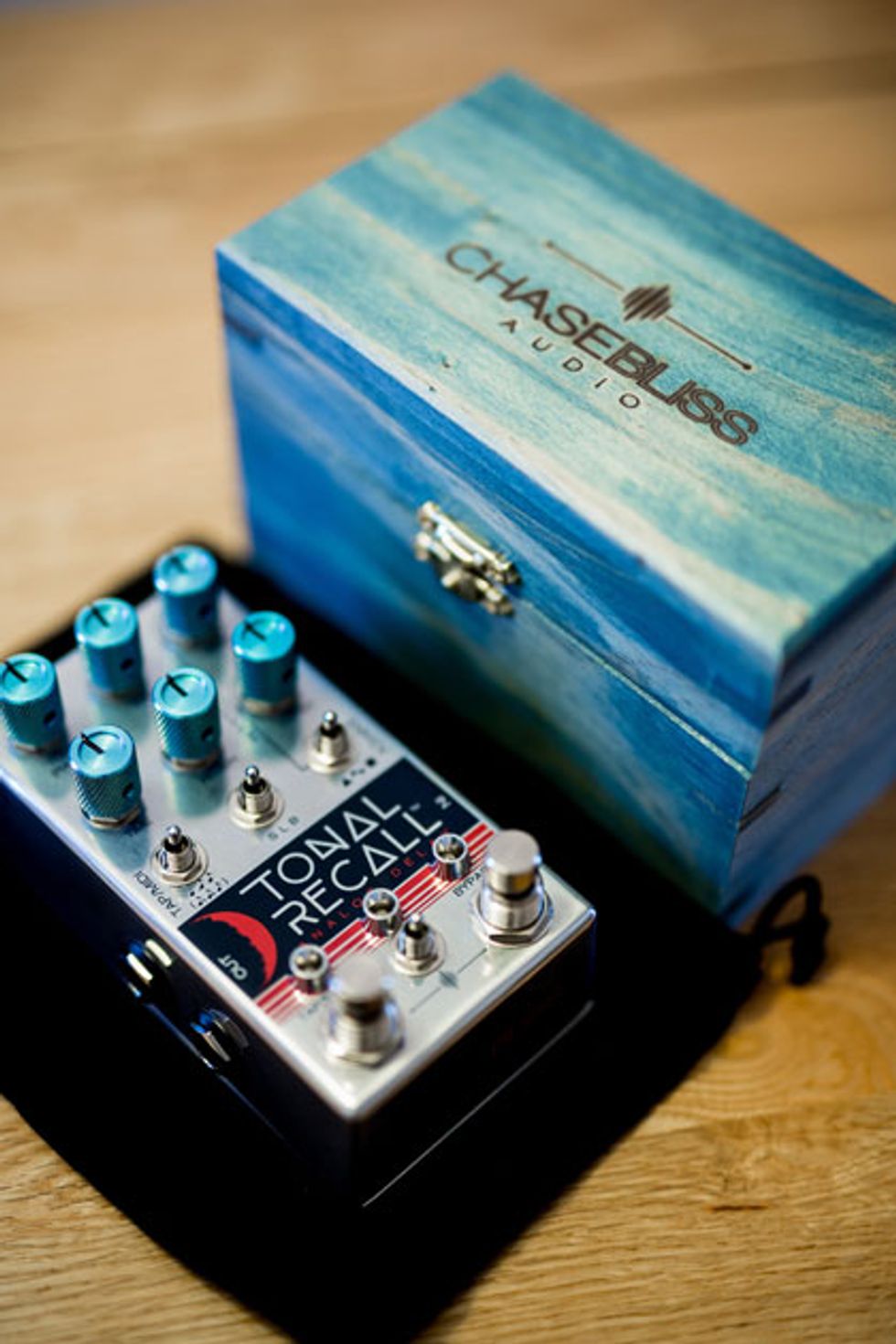
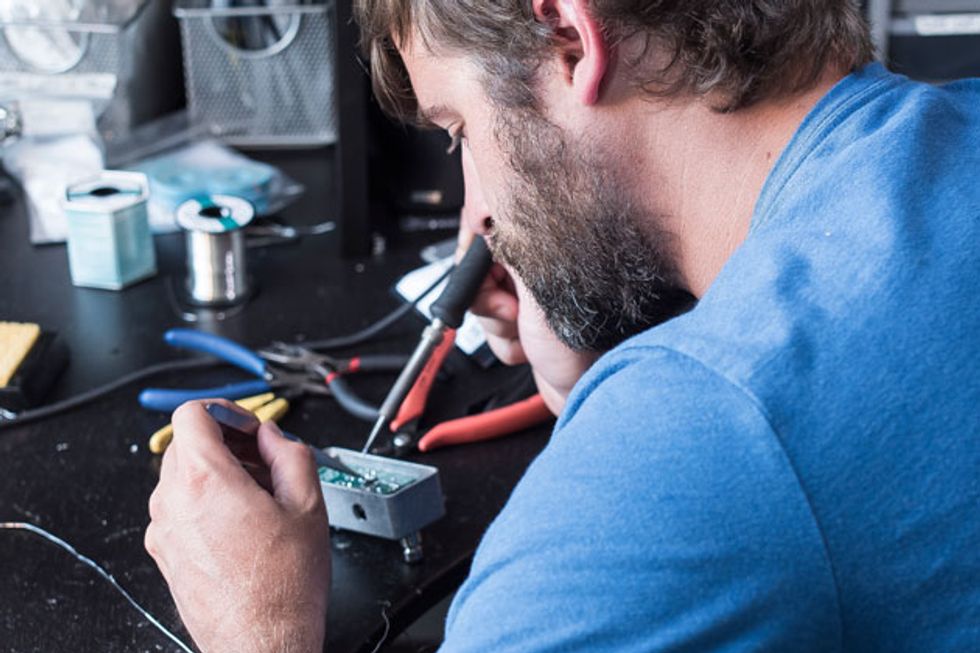
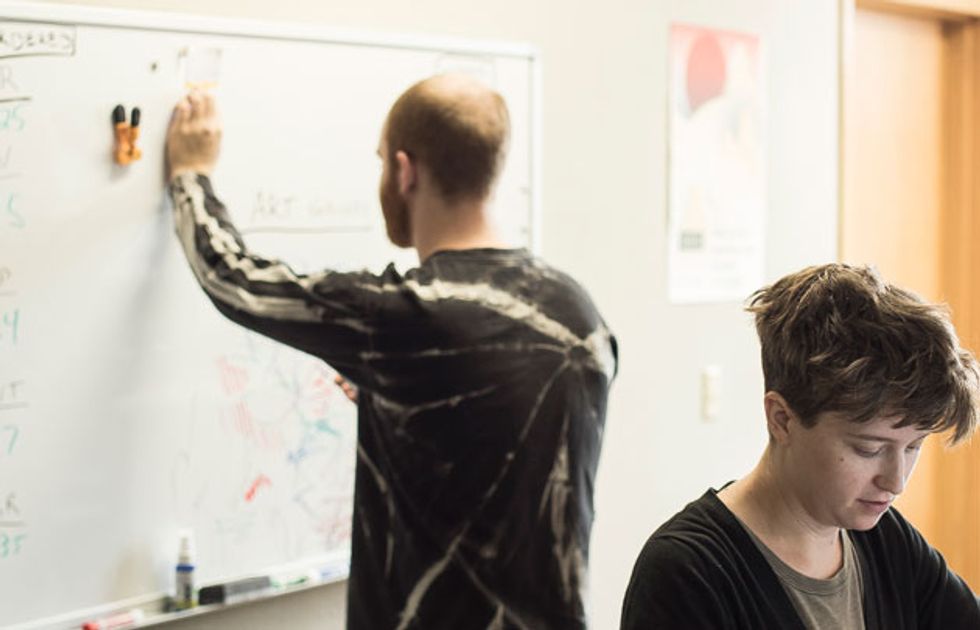
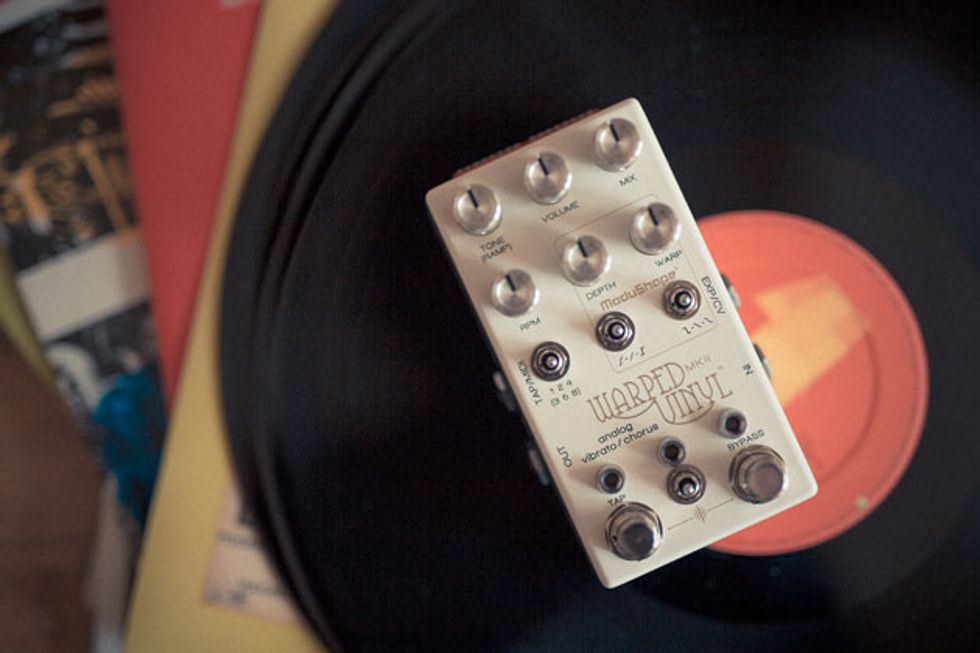
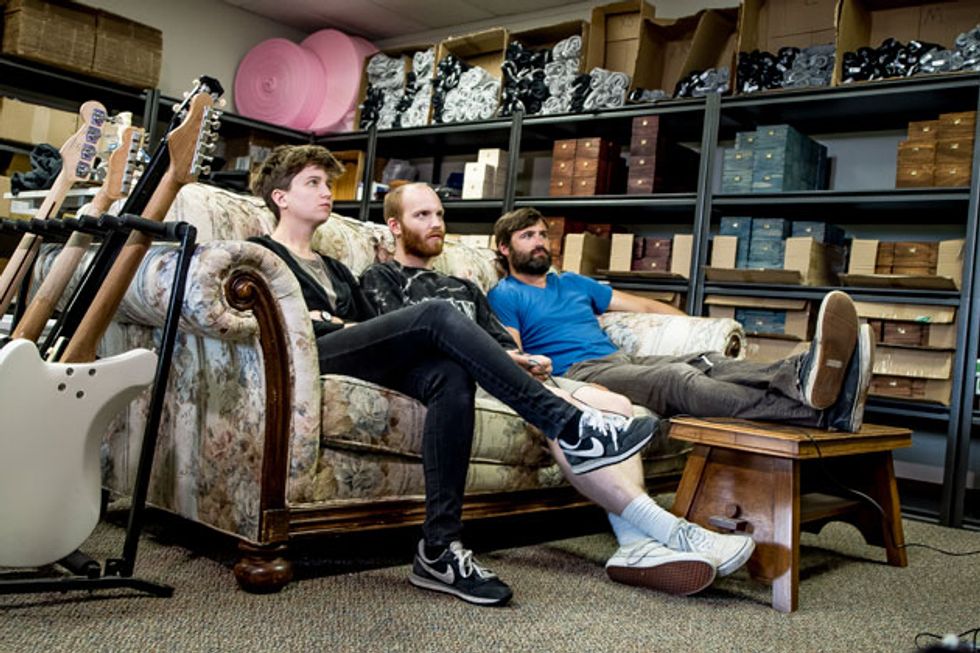
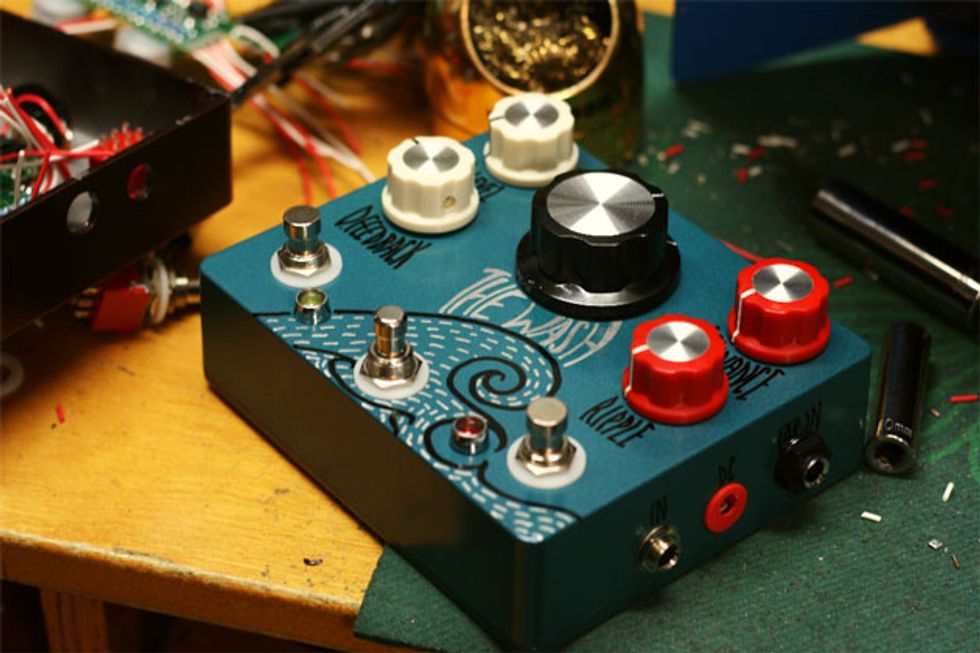
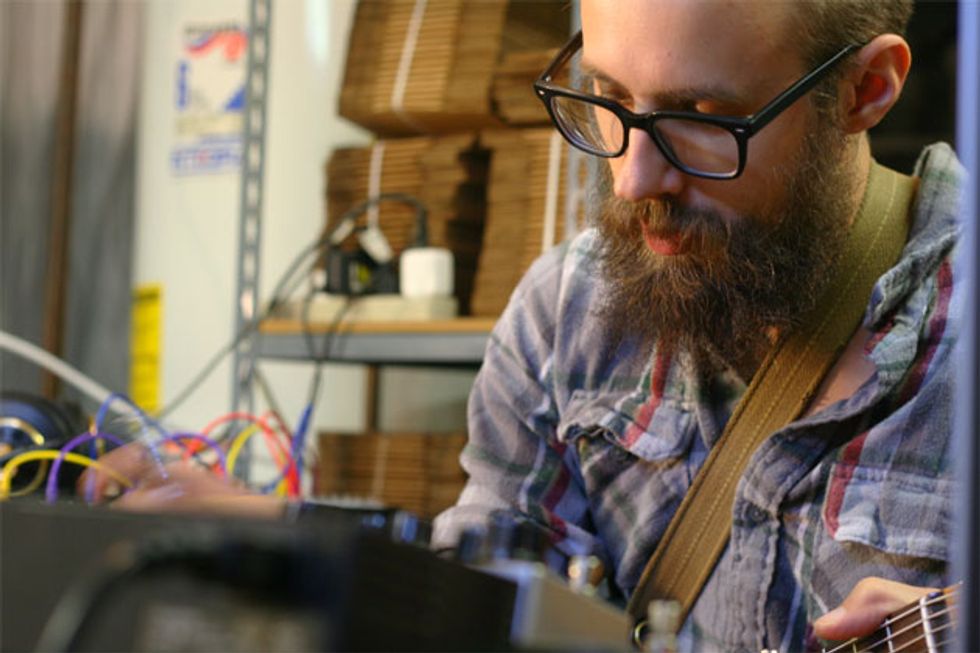
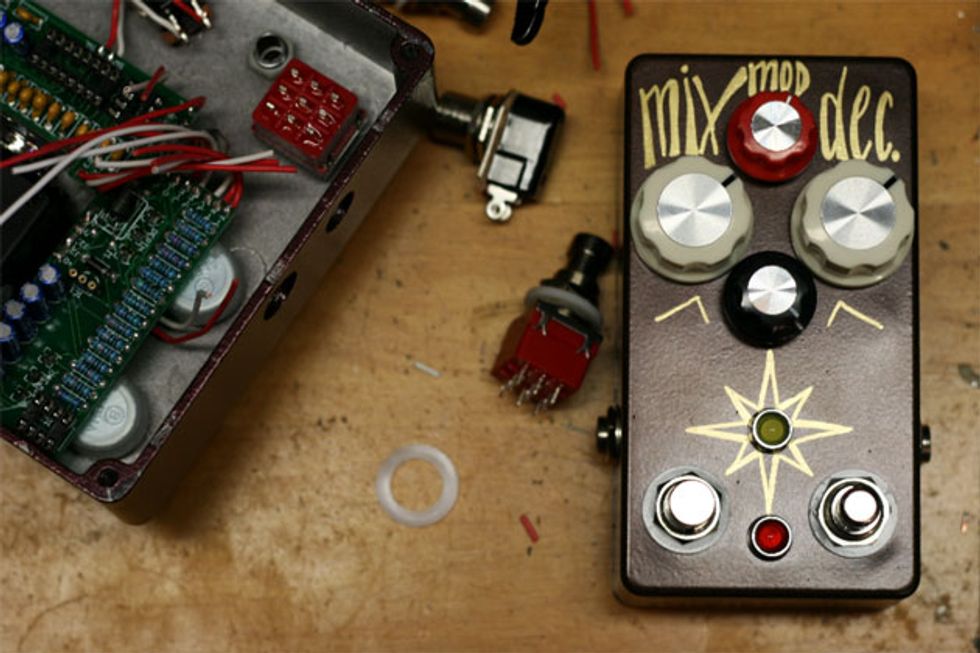
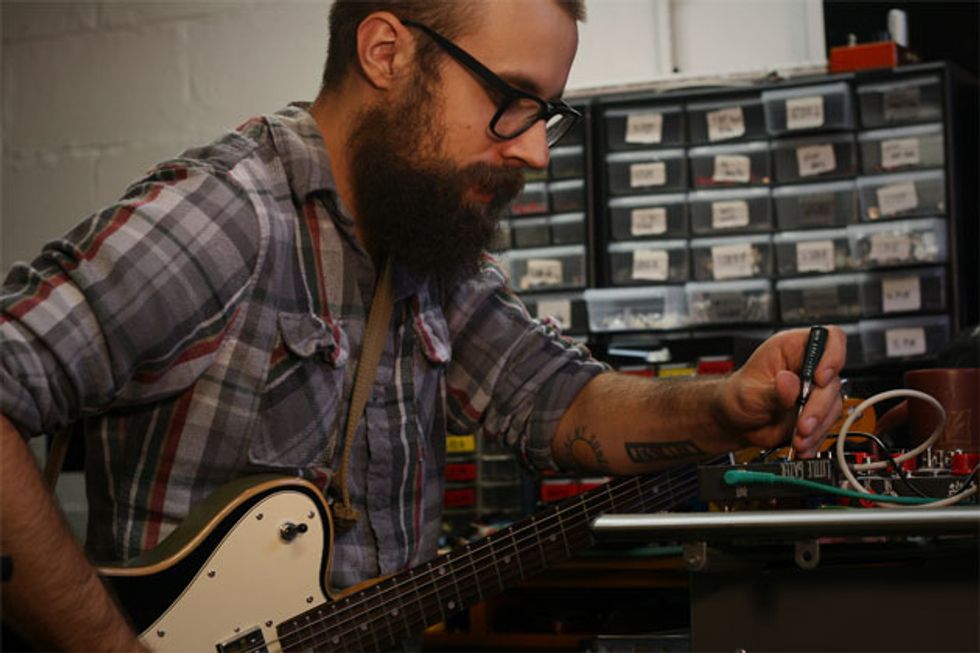
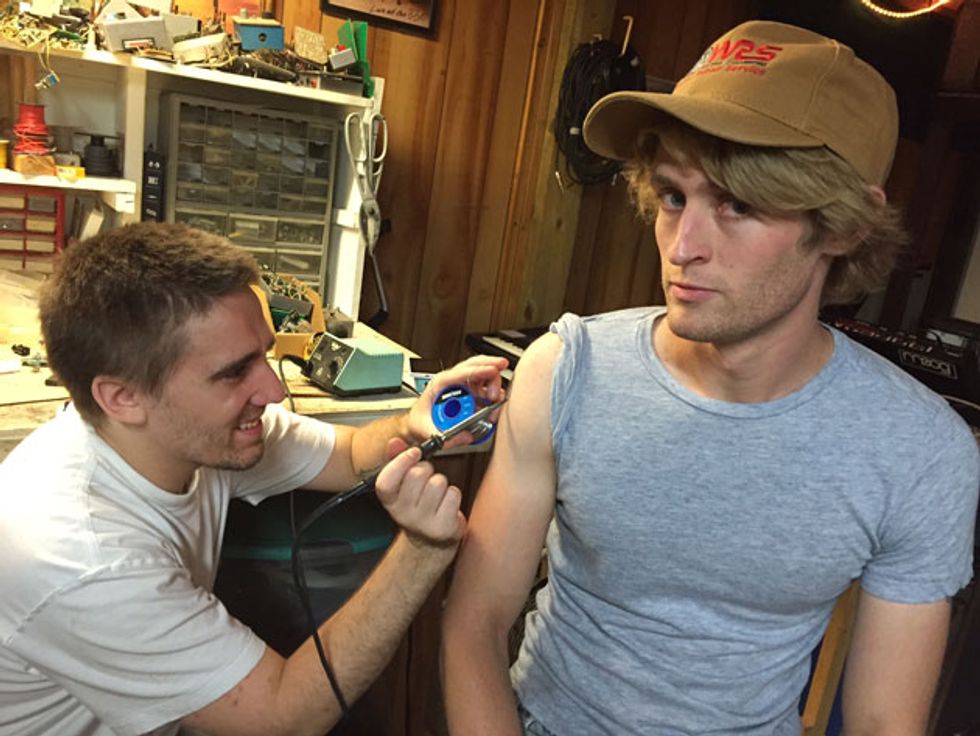
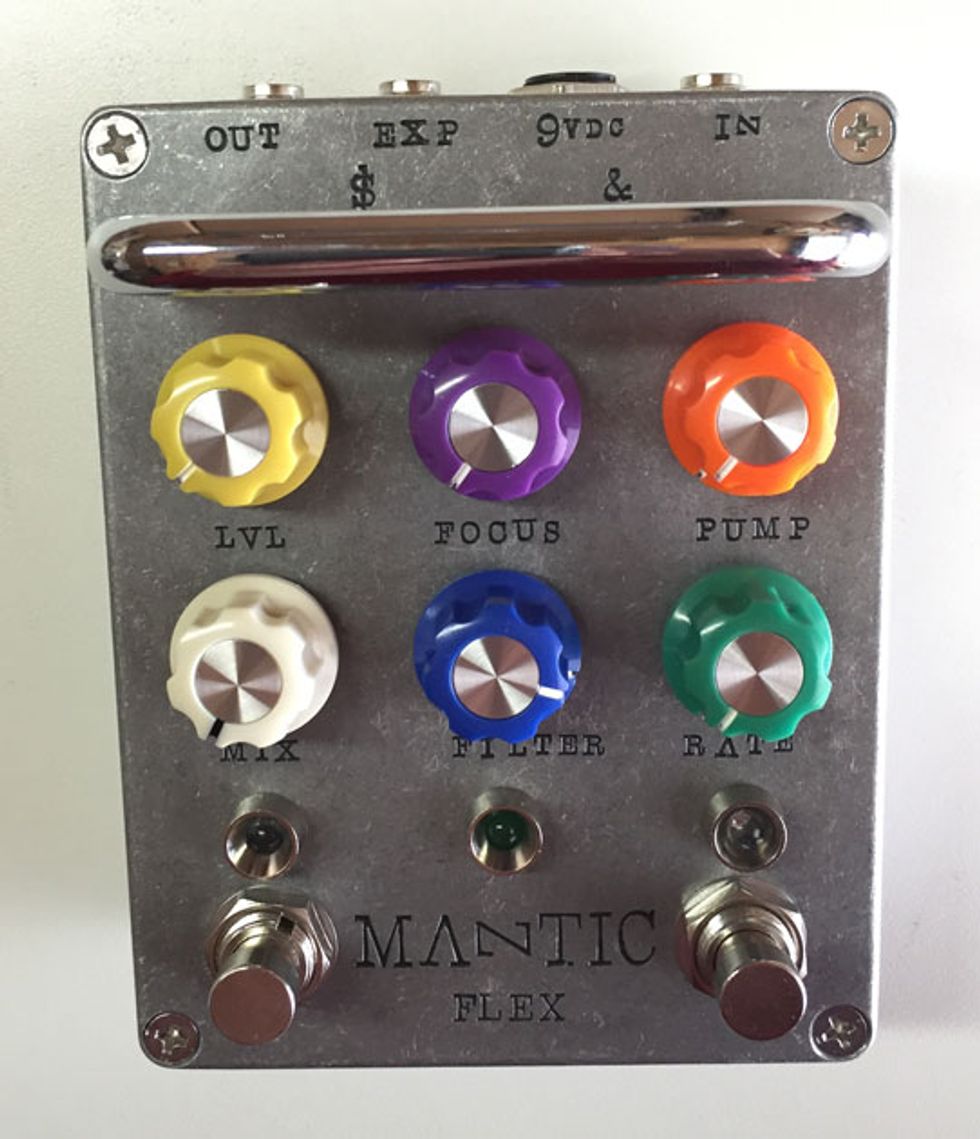
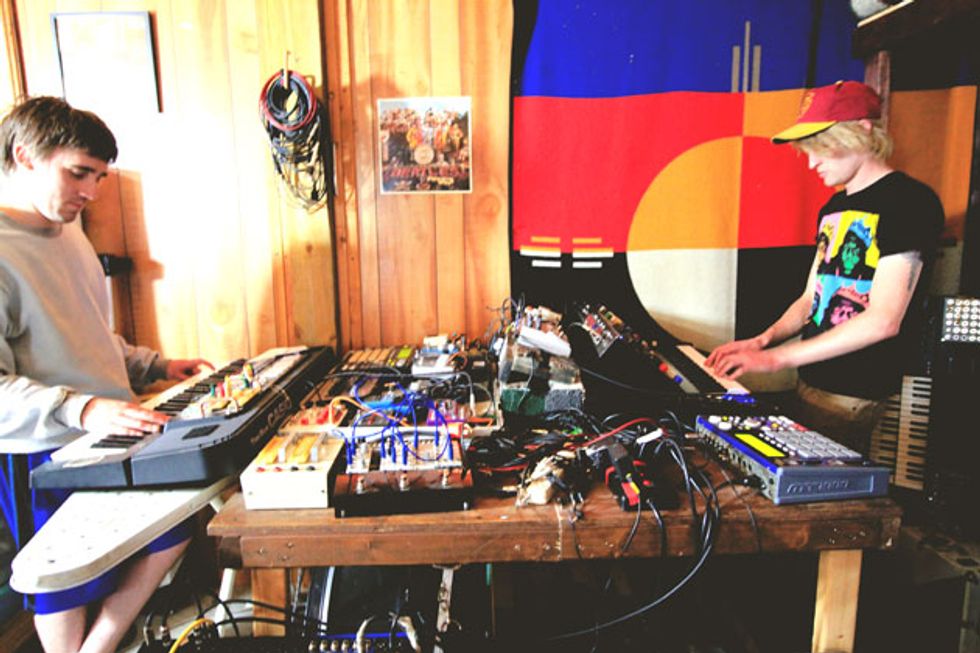
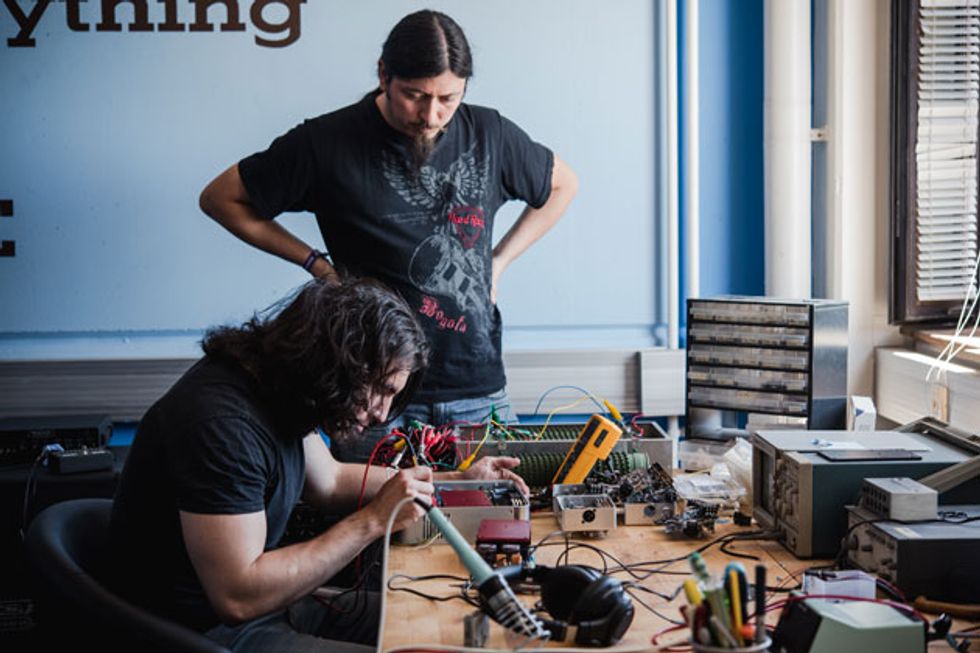
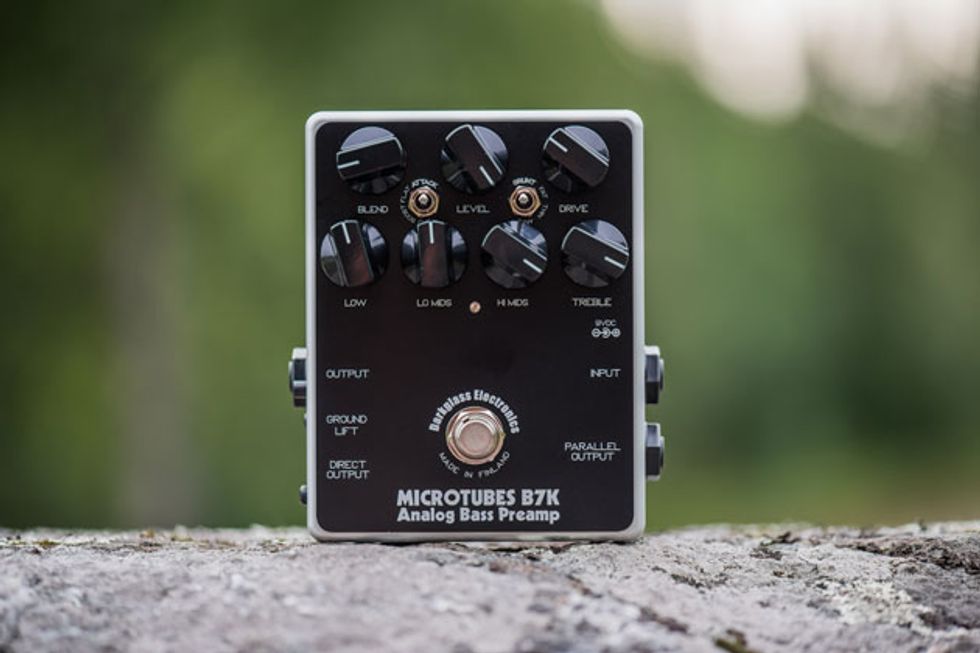
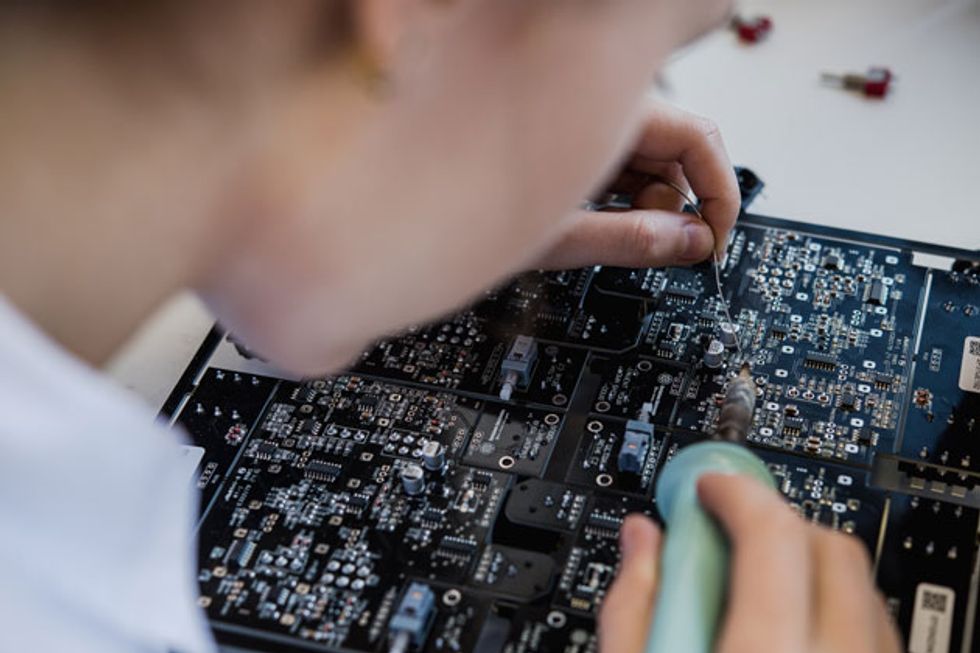
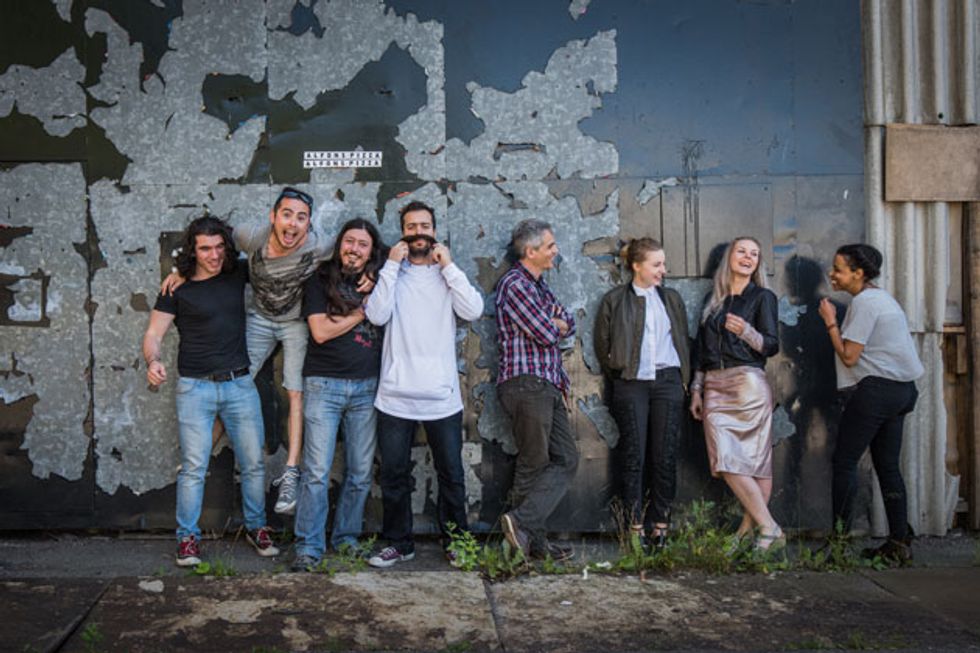
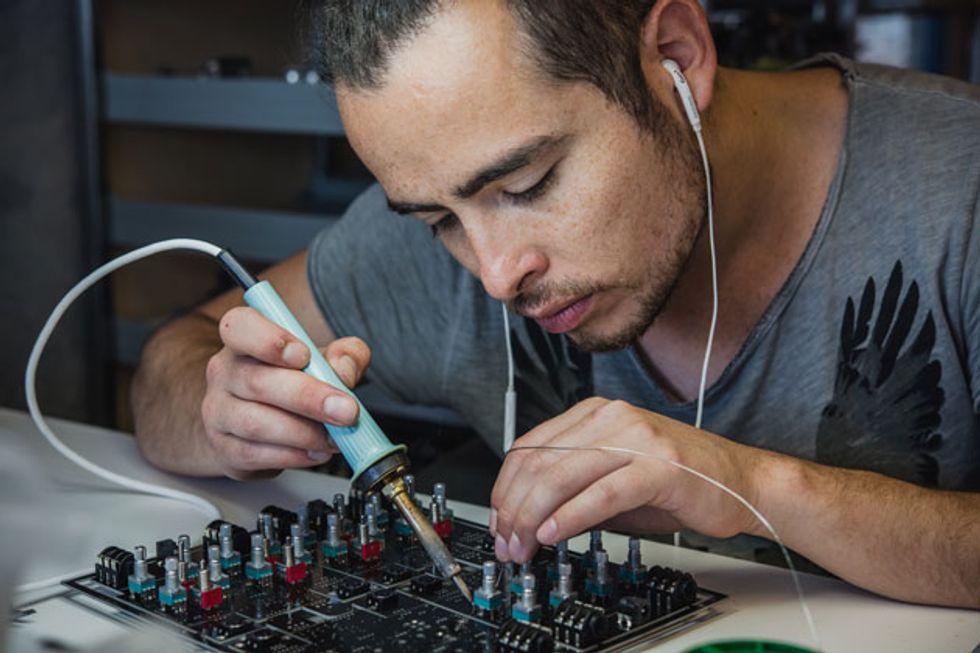
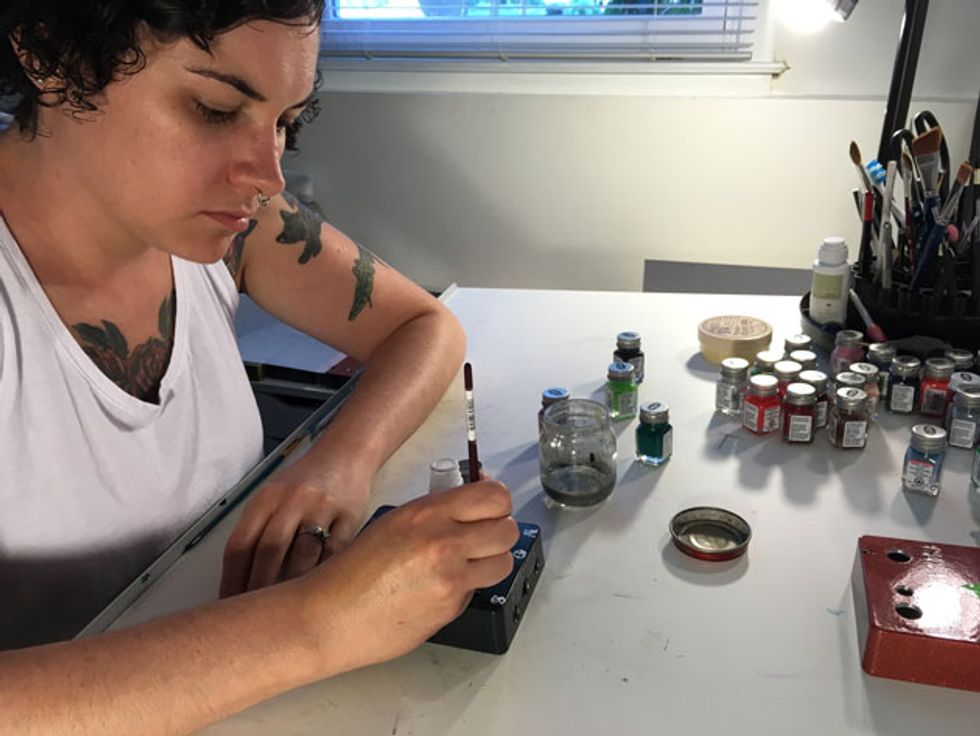
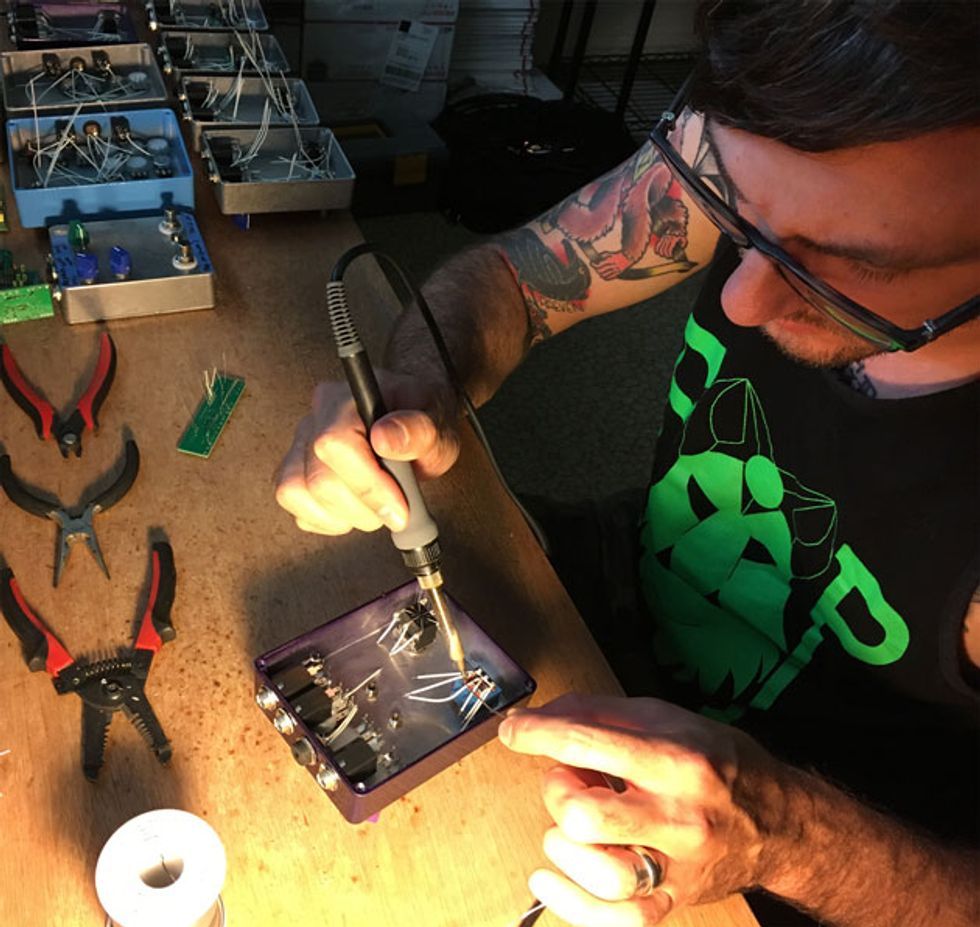
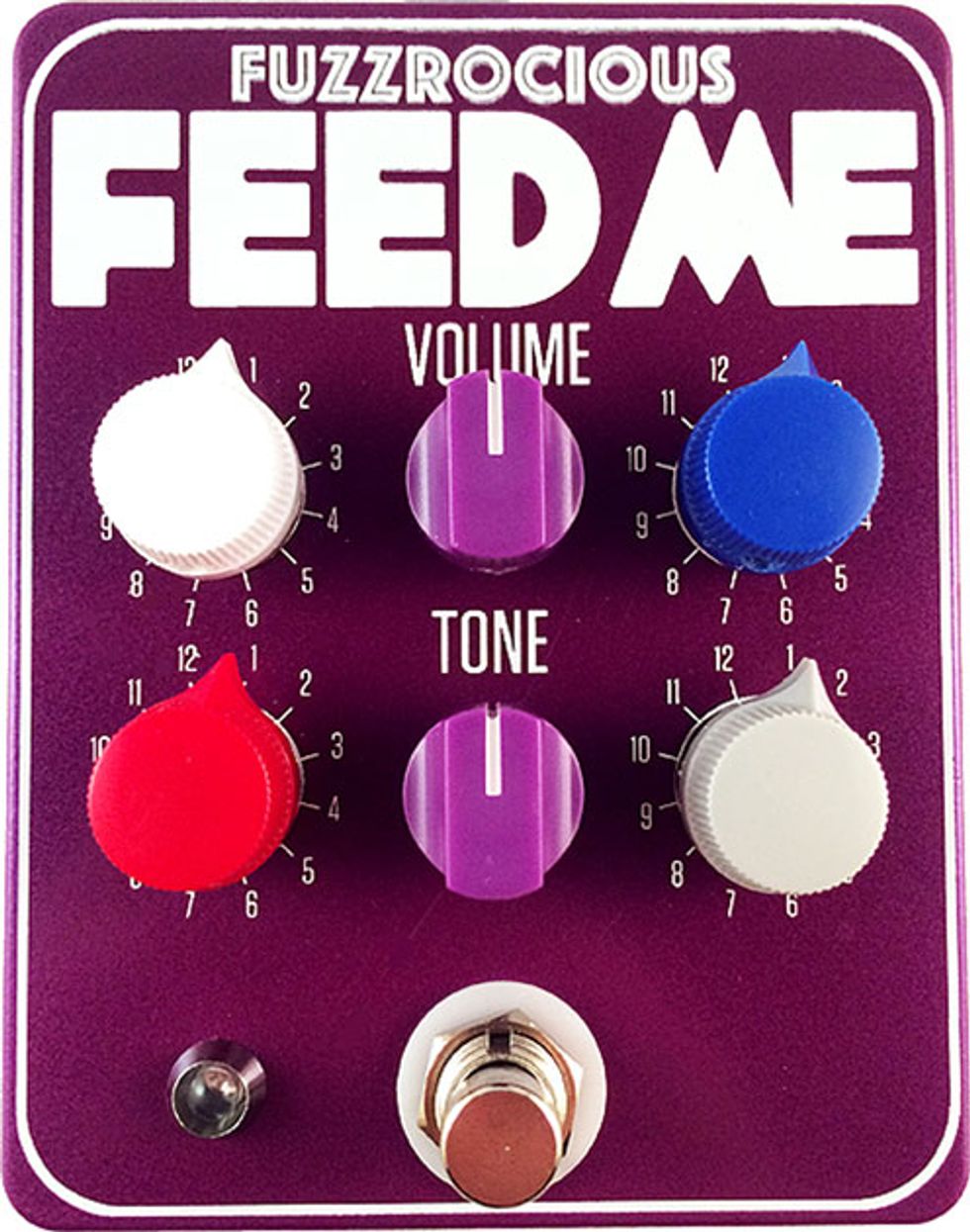
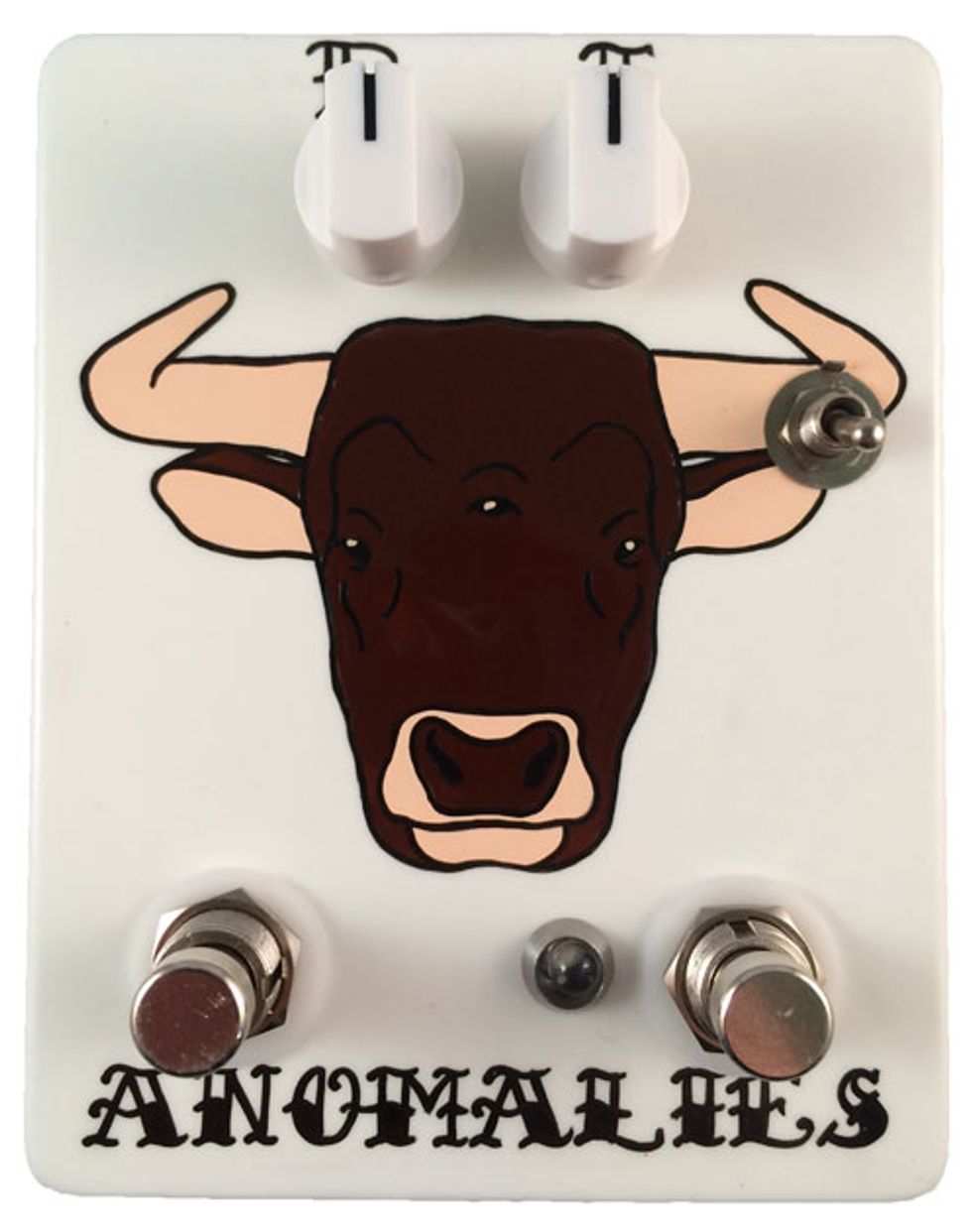
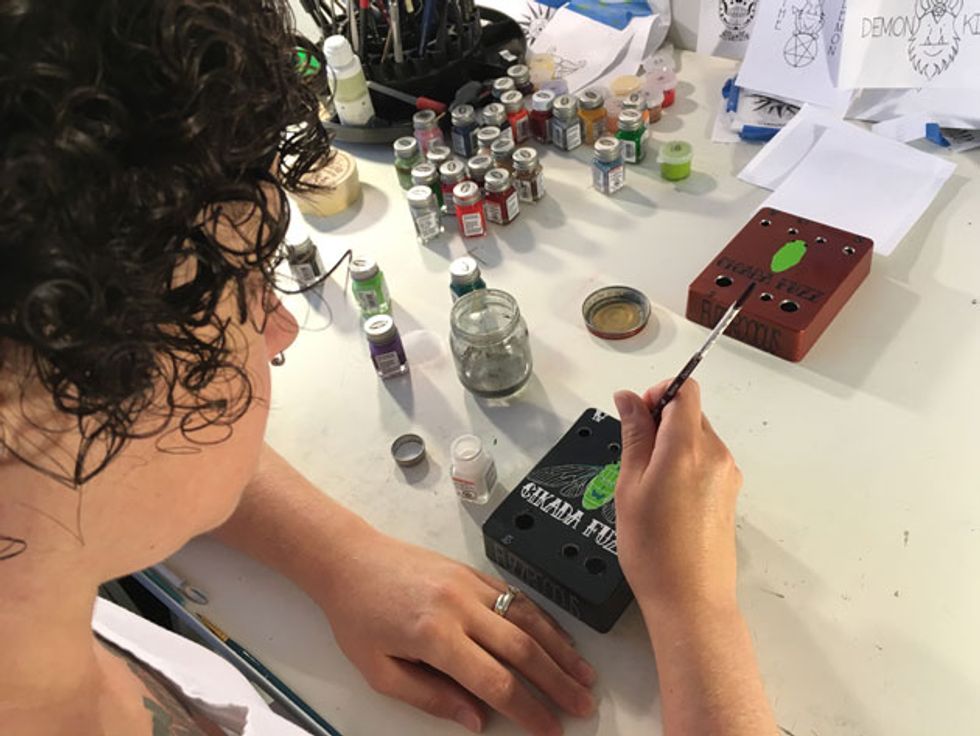

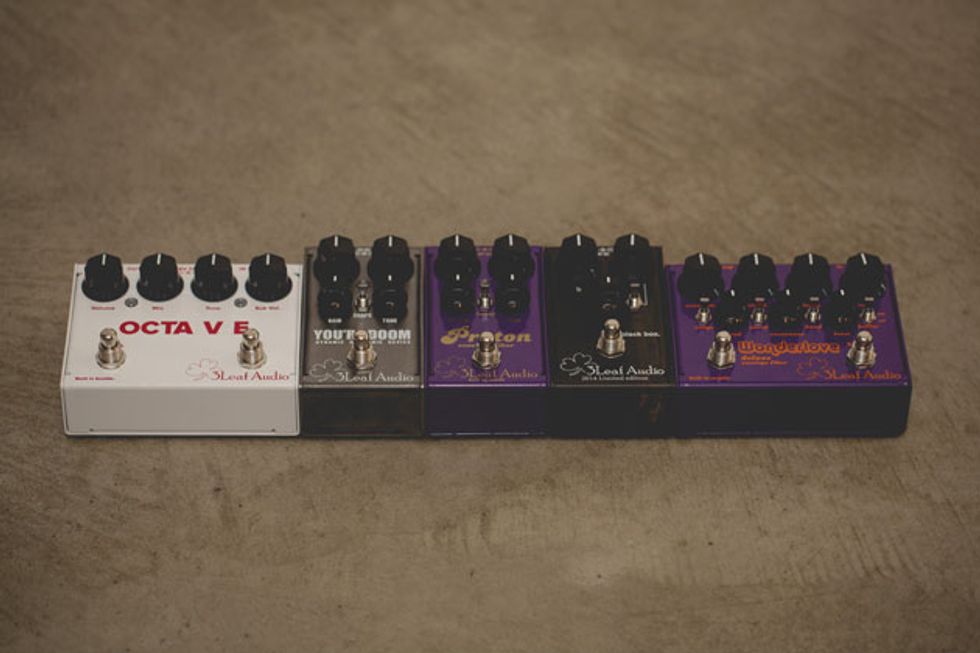
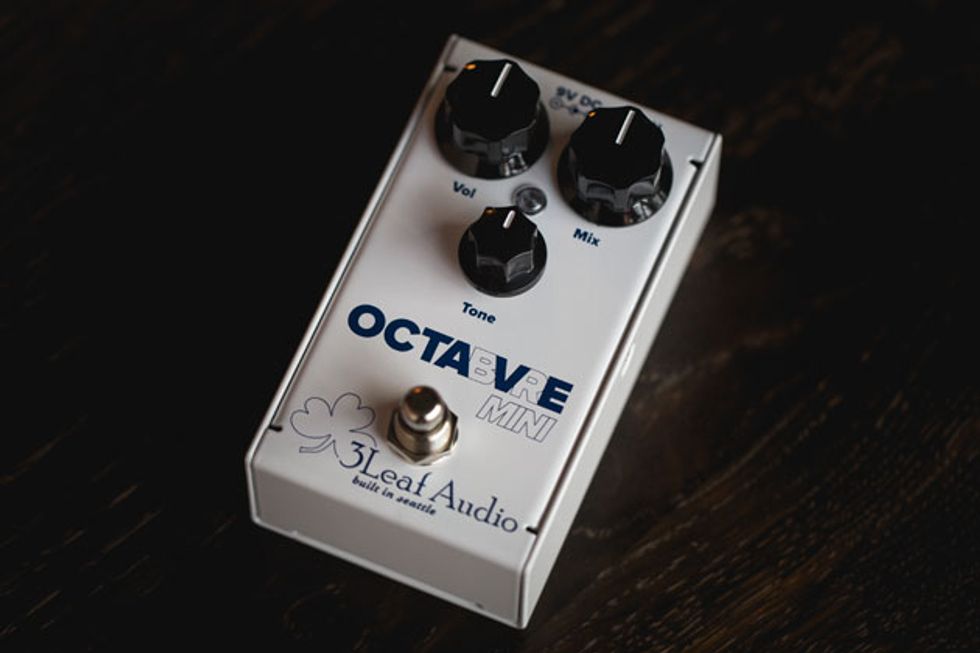
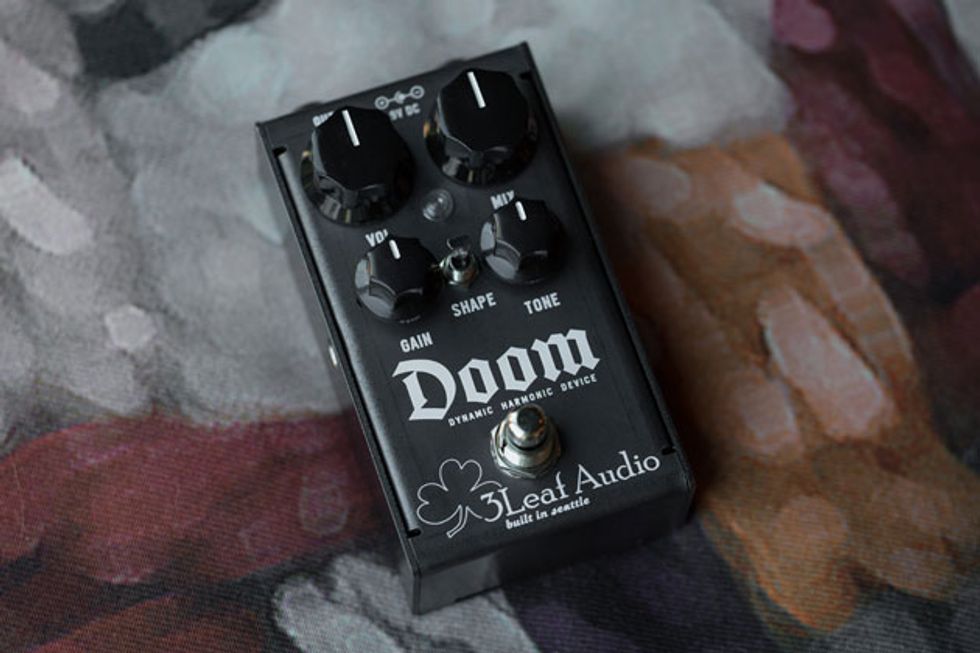
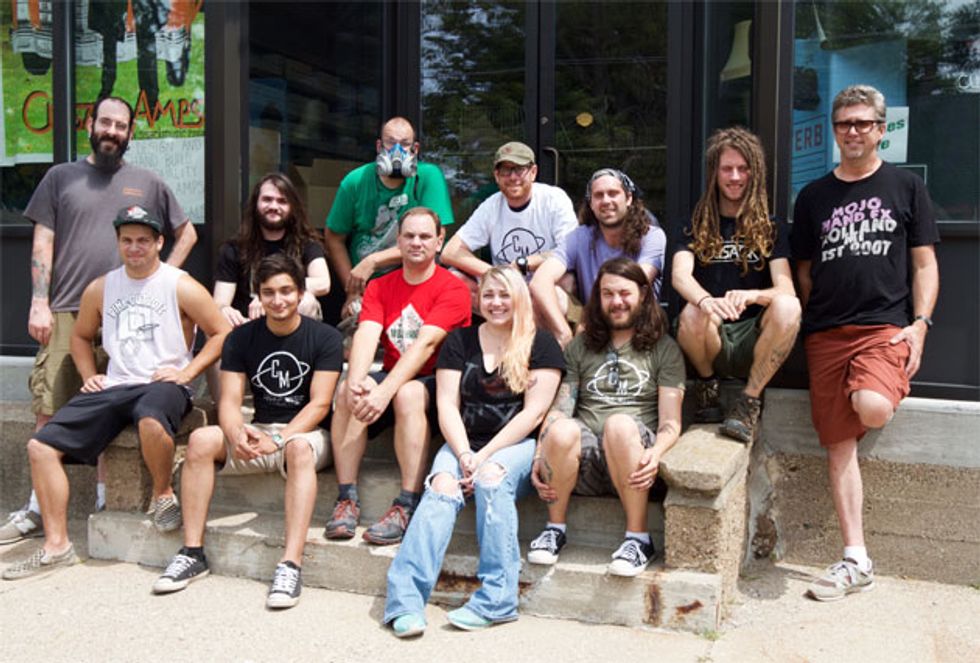
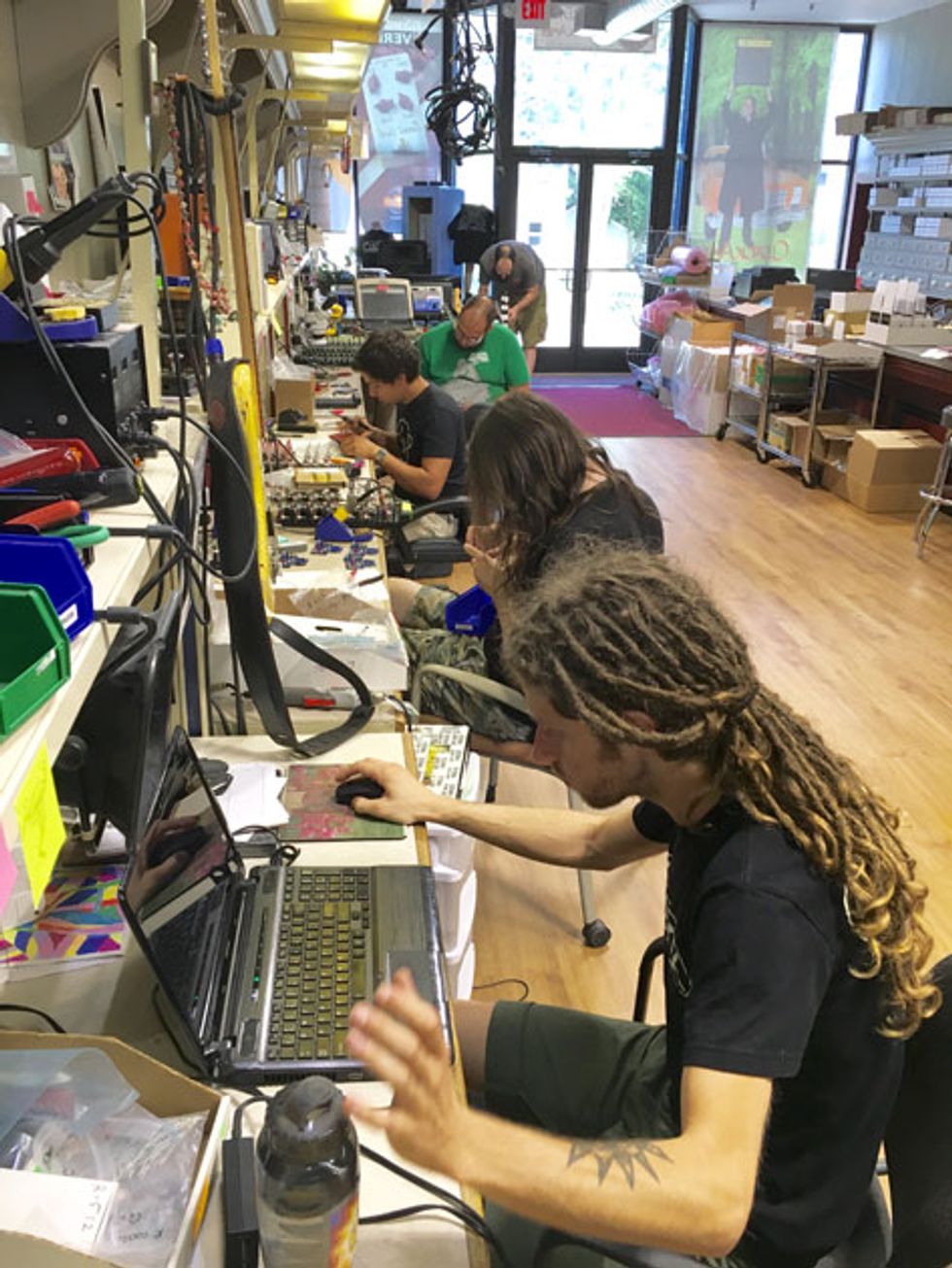
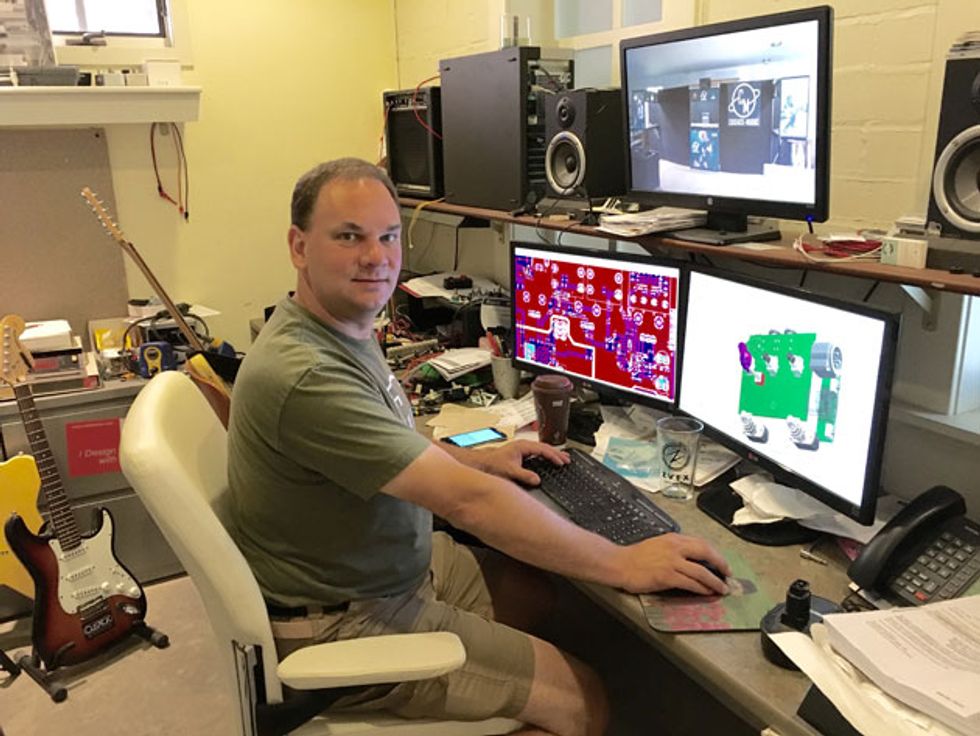
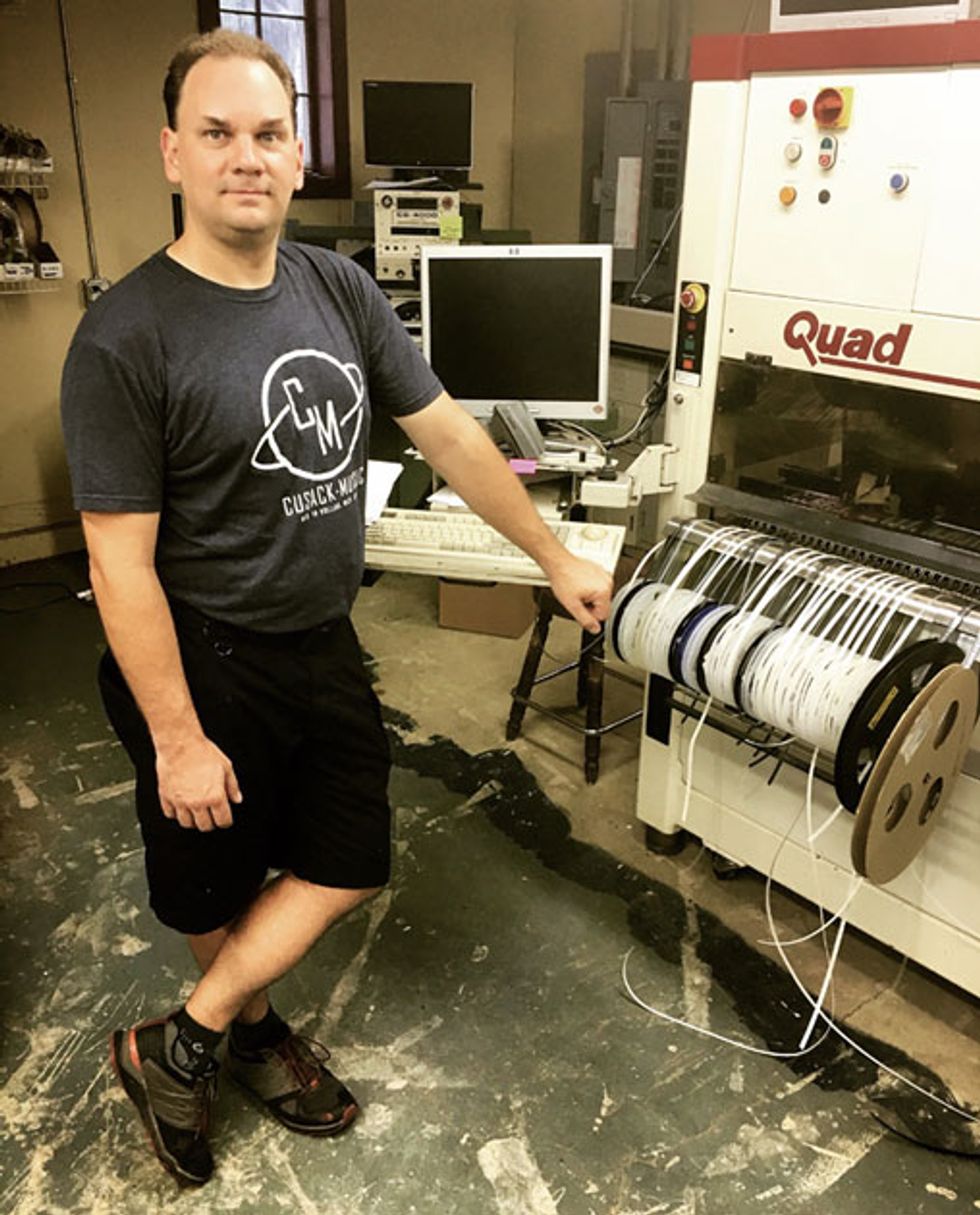
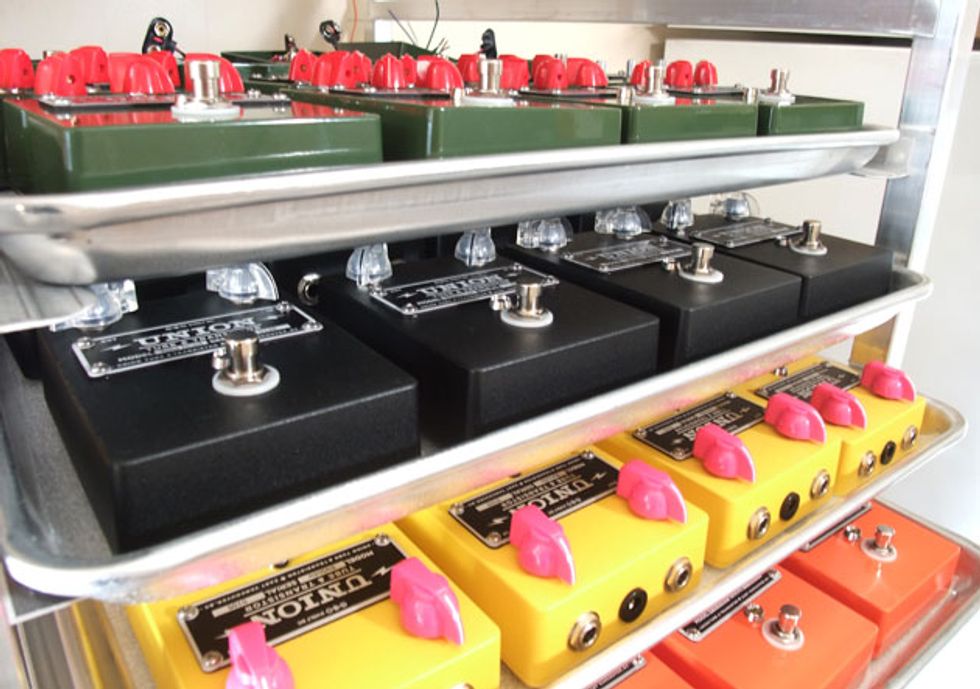
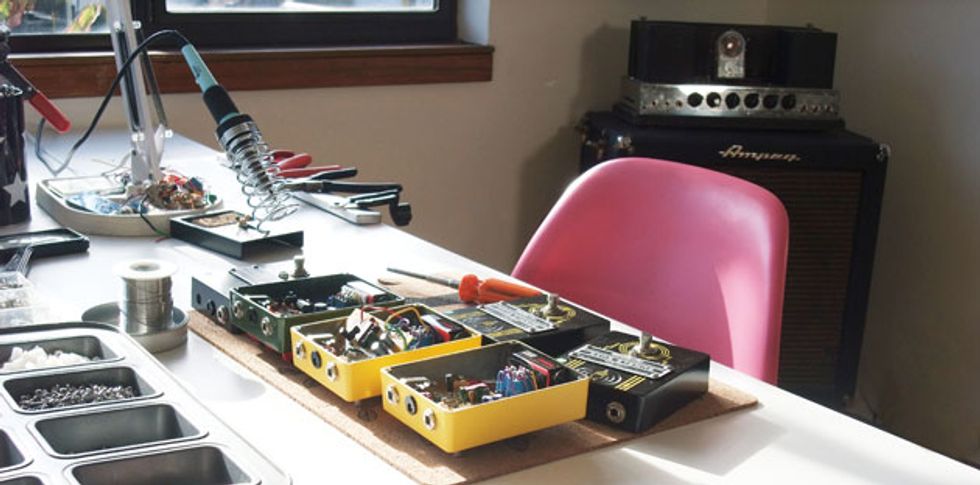
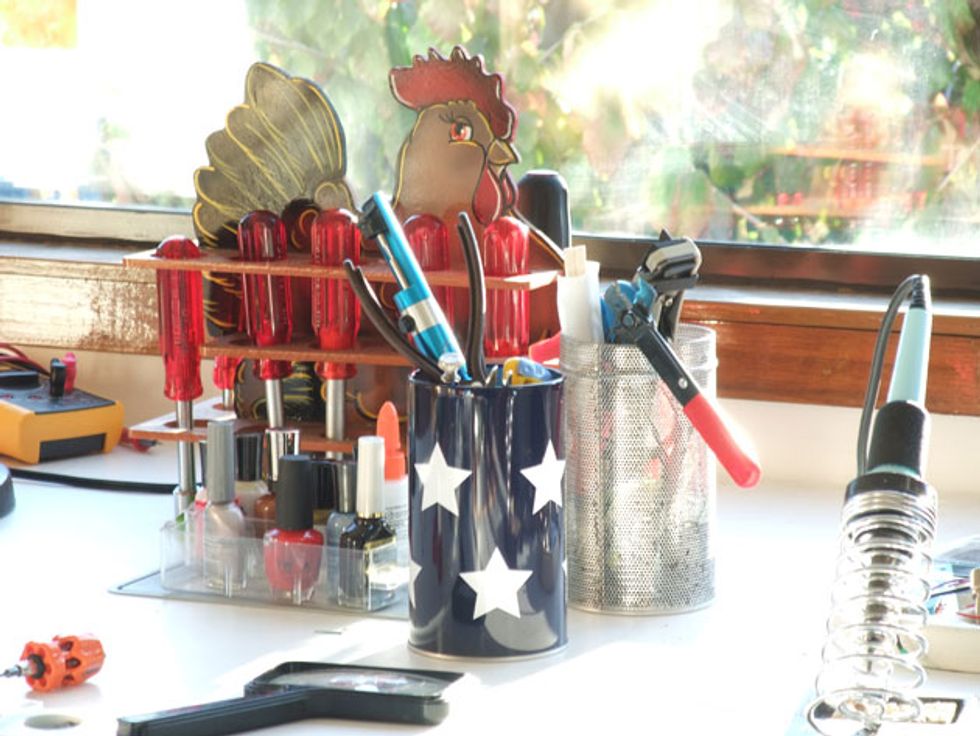






![Rig Rundown: Russian Circles’ Mike Sullivan [2025]](https://www.premierguitar.com/media-library/youtube.jpg?id=62303631&width=1245&height=700&quality=70&coordinates=0%2C0%2C0%2C0)











